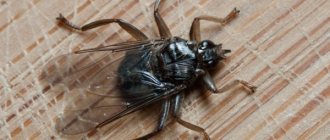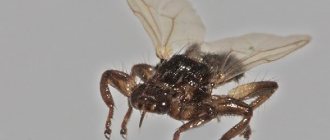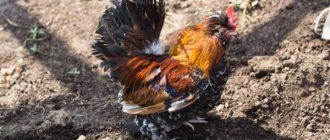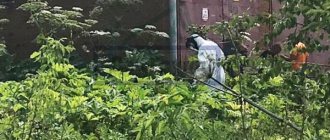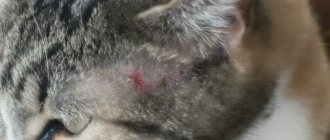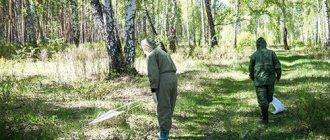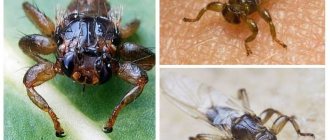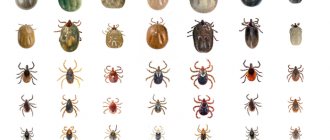Drill-driver DEKO GCD12DU3 Li-ion, 1x1.5Ah, Replaceable battery, 12 V, 32 Nm, 1 battery
1697 ₽ More details
Drill/driver DEKO DKCD16FU Li-ion in case + 63 accessories, 2x1.5Ah, Replaceable battery, 16 V, 32 Nm, 2 batteries
3168 ₽ More details
Tanning oils
Small in size, with a bright interesting color, attracting attention - this is the blister beetle. But appearances are deceiving and touching an insect in some conditions is life-threatening.
Blister beetles can be very dangerous
What are the appearance features
In the photo, the blister beetle shows a bright color with a metallic tint. The head is narrowed, antennae are also located here, there are no wings, but there are flexible elytra, but they cover a small part of the chest. The total length of the body is two centimeters, it is elongated. In some species it can even drag along the ground. Main colors:
- bright red;
- yellow;
- green.
The appearance of different types of blister may differ. But the lifestyle is almost the same. These insects are parasites; females lay at least 10 thousand eggs during their lifetime. The main victims of blister are locusts and bees, so the expectant mother places the eggs closer to them in the soil.
The larvae appear after about three weeks, they are amber-yellow in color with three limbs, scientifically they are called triungulins. The larvae eat other insects, which they find using their sensitive sense of smell.
These beetles eat locusts
They can easily penetrate a beehive; several methods are used for this:
- in a flower, bees wait for the bee to land and then cling to it, flying away together;
- the second method is more interesting - triungulins create a living ball, clinging to each other, and secrete enzymes similar to bees. As a result, the male picks them up and carries them into the hive.
Inside they eat nectar, honey and bee larvae.
Imago lifestyle
Clumsy insects with a thick body stay on the ground and crawl along stumps and herbaceous plants. Adults feed on cereals and love clover, dandelions, buttercups, anemones, and violets. If they find themselves near fields with vegetables, they damage agricultural crops. You can meet beetles in various biotypes: steppes, meadows, forest edges
To continue the life cycle, it is important to have nearby open areas suitable for solitary bees to settle.
Adults appear in spring, in April. After additional feeding they begin to mate. Beetles are slow and clumsy and do not run away from danger. Their hemolymph contains a highly toxic substance called cantharidin, which can kill small animals. When the oily liquid comes into contact with human skin, it causes an allergic reaction and blisters appear.
In regions where the area of meadows is shrinking, construction is taking place, plowing is taking place, grass is being mowed, and the number of purple t-shirts is decreasing. Due to the lack of wings, beetles cannot move long distances in search of new habitats.
Reproduction
Mating is the finale of the life of males; after transferring the seed to the female, they die. For laying, a place is chosen close to a colony of solitary bees. The female digs a hole in soft soil. In one clutch the number of eggs reaches 1000 pieces. The female makes 2-3 separate burrows with eggs. After this, it also dies. The larvae appear after 30-40 days.
The blister family is characterized by hypermetamorphosis. This type of insect development is transitional between complete and incomplete metamorphosis. The first instar larvae, called triungulins, differ from the older instars. External differences are related to lifestyle. Triungulins are actively moving, looking for hosts for further development. Once in a bee's nest, they moult and turn into short-legged, worm-like parasites that feed on honey. Before true pupation, insects go through a “false pupae” stage.
Is a beetle useful or harmful?
Adult females and males do not harm the environment. They feed on green plants. The larvae are parasites and in some cases have a positive effect, for example, they destroy locusts and reduce the number of harmful crops. But at the same time they pose a threat to garden species: potatoes, cucumbers, cabbage, grains and others. They cause damage to beekeepers by eating honey and bee colonies.
The beetle contains toxins in the body and can cause intoxication; this is especially common in animals that decide to feast on the insect.
Read on topic:
Features of the life activity of ladybugs
14.11.2020
Description of chironomids and their possible danger to humans
14.11.2020
What do cutworms look like and what harm do they cause?
14.11.2020
What do goliath beetles look like and can they be bred at home?
14.11.2020
If qualified assistance is not provided in a timely manner, the dog or cat may die; kittens and puppies have much less chance of survival than adult pets.
In the past, blisters were used in pharmaceuticals for the preparation of certain drugs - diuretics and improving potency. But such drugs had a lot of side effects, negatively affecting the nervous system, the functioning of the kidneys and liver.
When bitten, beetles release a toxic substance
For humans, the insect bite itself is not dangerous, but the threat is caused by a substance - cantharidin, which the beetle secretes. It is poisonous and causes a burn on the skin, a blister or an abscess. Therefore, therapy with antihistamines and anti-inflammatory drugs is necessary.
How to deal with leaf beetles
To remove pests from a plot of land, folk remedies and professional preparations are used. To speed up the result, several methods are combined. The main enemy of humanity in the garden is the Colorado potato beetle. It destroys potatoes, eggplants, tomatoes, and less often attacks legumes. It can lay eggs anywhere, even on weeds.
Professional preparations
Insecticidal substances with contact-intestinal action will help exterminate a colony of pests in a day. However, the drugs have one significant drawback - they do not affect eggs. For this reason, the leaf beetle appears again, and the crop has to be processed again. This should be done after 14-20 days. During this time, a new generation of pests appears, and the effect of the drug after the previous spraying weakens.
Repeated processing of crops will destroy surviving adults and larvae that have not yet become sexually mature. But that’s not all. After 20 days, the leaf beetles should be poisoned again, since they can fly in or crawl from neighboring areas.
Beetle control products
Effective preparations for leaf beetles:
- Karate;
- Aktara;
- Confidor;
- Sherpa;
- Bankol;
- Actellik.
Dissolve in cold water according to instructions
During work, you need to take precautions, use rubber gloves and a respirator. It is prohibited to treat plants during the flowering period, 20 days before harvesting.
Folk remedies
Less efficient, more labor-intensive, but environmentally friendly.
- Ash and tobacco repels pests. Irritates the skin on contact, causes muscle spasms if ingested. Mix tobacco dust and ash in equal proportions, add water, and add soap. The last ingredient is needed to ensure that the powder remains on the leaves longer. Spray the plants, especially from the underside. Scatter dry powder over the area.
- Dissolve 500 ml of vinegar or a bottle of ammonia in a bucket of water. Pour the solution into a spray bottle or watering can and treat the culture. It is allowed to spray again with vinegar after 3 days, with alcohol - after 2 weeks.
In parallel with folk remedies, herbal remedies are used. The effect can be noticed after a week; be sure to repeat the treatment every 7 days until the pests completely disappear. One of the most common products is Fitoverm. You can buy it in a specialized store or hardware department.
What types of blisters are there?
There are a huge number of varieties of blisters, the most famous are:
- Quadruple.
- Saffron.
- Changeable.
- Dressy.
- Spotted.
- Cotton.
- Diverse.
The most famous is the Spanish fly or T-shirt.
One of the varieties is the Spanish fly
Harm from a beetle
The damage caused by the goose beetle is not inferior in terms of damage to its competitor, the Colorado insect. The only difference between them is that the first specializes mainly in cereal crops, while Leptinotarsa decemlineata eats potato leaves.
The damage caused by the beetle is unimaginable, and damage to cereals is caused not only by adults, but also by larvae. Despite its short life cycle, one mature beetle is capable of eating up to 180 grains (or 10 spikelets). And if you imagine how many there are in total, then what will be the crop loss?! Moreover, the main danger lies not only in eating grains, but also in the fact that beetles are able to knock them off the ears to the ground. In this regard, the number 180 can increase to 400.
According to average expert estimates, the bread beetle is capable of destroying a crop of 1.1 hectares of winter cereal. Spring wheat may suffer even more – up to 2.3 hectares.
Laying eggs
Immediately after mating has occurred, the female begins to lay eggs. Their length is about 7 millimeters, and their diameter is 1.2 mm. One female lays about 1000 eggs per season, a particularly fertile one lays up to 1500. This is possible only with sequential maturation, so the whole process drags on until the end of June. Eggs are laid in For protection, the female cuts them with the ovipositor, however, this does not always save future offspring from parasites. One of the most dangerous enemies for swimming beetles is the prestwichia rider. These parasites lay several dozen of them in each beetle egg. The ichneumon ichneumon larva feeds on the diving beetle's egg, pupating inside it. Young parasites emerging from the dolls mate and then leave the shell. Prestwichia and caraphractus are the only enemies of swimming beetles.
What to do if you are bitten by a bug
Beetle bites are not common. They are accompanied by local changes in the skin and soft tissues in the bite area. Toxic reactions occur extremely rarely. These data suggest that you can cope with such a problem yourself.
The main thing is to know some of the features of treating such bite wounds. These include:
- Wash the bite site with plain water and laundry soap,
- Treatment of the wound with antiseptic solutions (peroxide, alcohol, brilliant green, iodine),
- Applying cold
- Pressing on the bitten area
- Applying a dry dressing
- If the wound becomes suppurated, it is subject to surgical treatment of the purulent focus. It is better to have a specialist do this. After removal of purulent-necrotic tissue, daily dressings are carried out with washing the wound with hydrogen peroxide and applying ointment dressings,
- The need for antihistamines and antibiotics is rare.
Author of the article: Danilova Tatyana Vyacheslavovna | Infectious disease physician
Education: in 2008, received a diploma in the specialty “General Medicine (Therapeutic and Preventive Care)” at the Russian Research Medical University named after N. I. Pirogov. I immediately completed an internship and received a diploma as a therapist.
Other doctors
‹
How to lose weight at home without dieting?
Lifestyle, habitat
Insects feed on leaves or plant juices. They prefer one type of plant, similar in class or completely different. The leaf beetle multiplies quickly, lays eggs on the leaves, the larvae penetrate into the plate and form mines. The presence of tubercles of different colors - red, green, white, brown - indicates the presence of baby beetles inside.
Some types of leaf beetles lay eggs closer to the root system of trees and shrubs; the larvae live in the soil. Formed, strong plants are not harmed. Terrestrial “residents” are capable of gnawing off the entire green part of a bush or young tree in a season, leaving only the skeleton. For these reasons, the leaf beetle has been declared an inveterate pest of agricultural crops, and is being fought against year after year.
Leaf beetles common in our country are:
- poplar;
- alder;
- viburnum;
- rapeseed;
- aspen;
- elm;
- green.
Leaf beetles
Adults gnaw holes in the leaves, the larvae eat the entire green part, leaving only the veins.
Behavior
Dytiscus marginalis live throughout Europe, as well as in North America, Siberia, Japan and the Caucasus. They like to settle in fresh waters located in places with a predominant temperate climate. To live, swimmers choose small streams, shallow lakes and ponds.
Usually, ringed swimmers are staunch homebodies, but sometimes during a full moon they are overcome by the desire to travel, and under the cover of darkness they fly to a neighboring body of water. These beetles swim very well, quickly rowing under water with all their legs like oars. The air supply collected under the elytra allows them to breathe underwater.
Swimming beetles always hunt from ambush, overtaking the intended prey with one sharp throw.
Their diet includes various insects, snails, tadpoles, small invertebrates, as well as the weakest fish fry. On occasion, the beetles will feast on carrion with an appetite, and if there is a shortage of food, they can starve for up to 2 months in a row without any consequences for their health.
To protect themselves from fish attacking them, they use a poisonous paralyzing substance, which is sprayed from a gland located on the prothorax directly into the aggressor’s muzzle.
Swimming beetle bite
The swimming beetle is a common inhabitant of fresh water bodies with a large amount of vegetation and other living creatures. Therefore, anyone who is close to such water sources can meet him. Among the features of the swimming beetle, one can highlight its rather large size (about 3-5 cm), convex surface and oval shape, and the presence of hard wings. It spends its main life cycle in water. Sometimes it can be seen on land near a body of water. Swimming beetle bites are more common in water.
Even the memory of a swimming beetle bite evokes fear in people who have been attacked by it. The moment of the bite is felt as a sharp, sudden pain. It persists even after direct contact with the beetle ceases. The bite resembles a puncture of the skin with a sharp object with localization of pain in only one place. After some time, skin appears with infiltration of surrounding tissues. If a parallel infection occurs, redness of the skin occurs. Very often, the consequence of a swimming beetle bite is the formation of painful bumps that resolve after 2-3 weeks. If the basic rules of wound treatment are neglected, suppuration of the bitten area may occur. There is no danger to life, allergic or toxic reactions.
